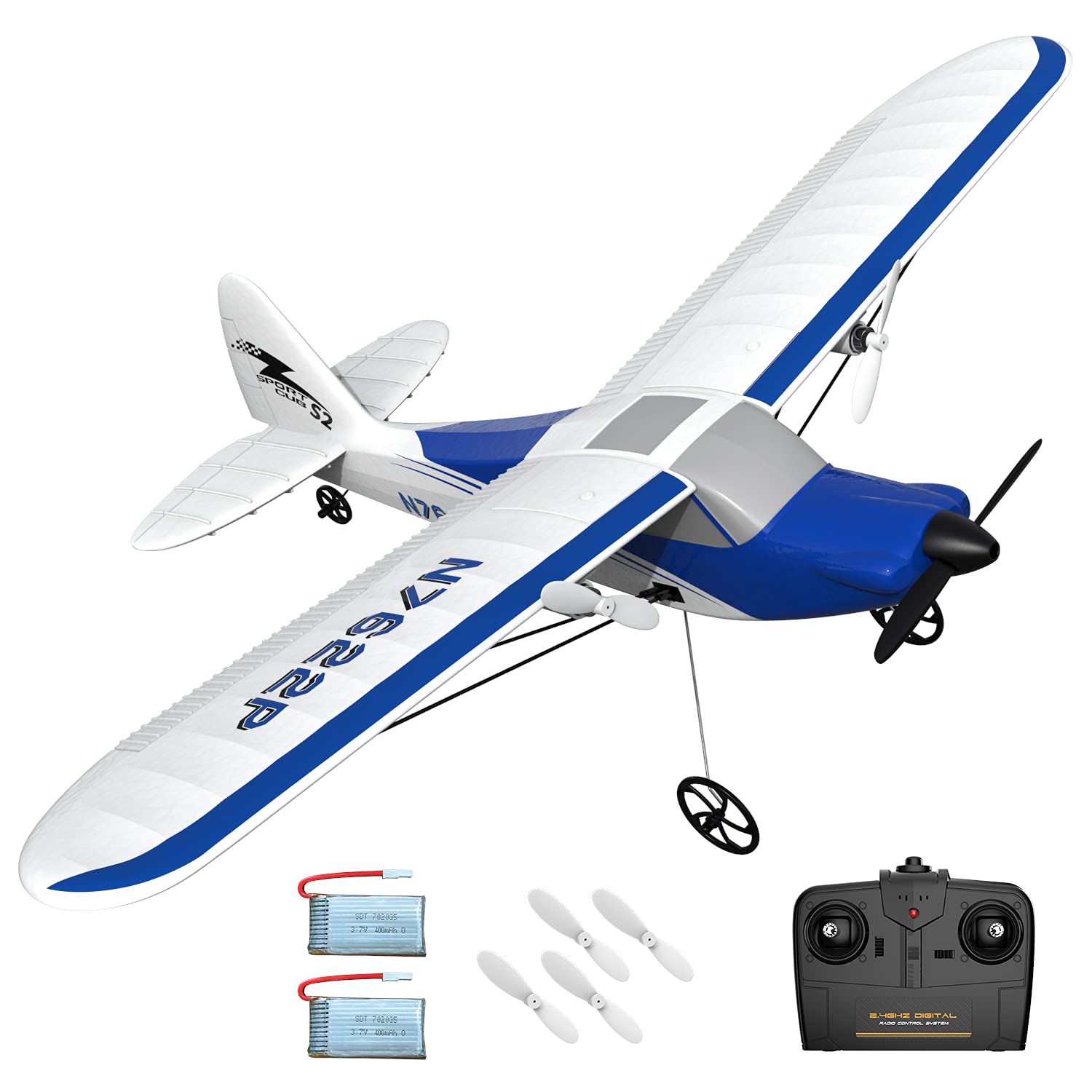The Sky’s the Limit: A Dive into the World of RC Planes
For centuries, humans have dreamt of soaring through the skies. The invention of the airplane brought this dream to life, revolutionizing transportation and exploration. And while most of us will never become professional pilots, we can still experience the thrill of aviation by taking to the skies with remote-controlled (RC) planes.
Unearthing the History of RC Planes
Before we delve into the present and future of RC planes, let’s take a step back in time. The concept of remote-controlled aircraft is not a recent development. In fact, it dates back to the early 20th century. Early pioneers in this field used simple radio systems to control their aircraft. However, these were limited in terms of range and functionality.
It wasn’t until the mid-20th century that the technology for RC planes started to advance significantly. Transmitters and receivers became more sophisticated, allowing for greater control and range. This progress paved the way for a flourishing RC plane community.
The Technology Behind RC Planes
The magic of RC planes lies in their technology. These miniature marvels are equipped with a range of electronic components that ensure they can mimic the movements of their full-sized counterparts. Here are some key components:
1. Transmitter and Receiver
At the heart of every RC plane is the transmitter and receiver. The transmitter, held by the pilot, sends control inputs to the receiver installed in the aircraft. This communication is typically done through radio frequencies, allowing the pilot to control the plane’s movements.
2. Electric Motors and Engines
RC planes are powered by electric motors or engines. Electric motors are more common in beginner-friendly models, as they are quieter and easier to maintain. However, for those seeking an authentic experience, gas or nitro engines can provide more power and realism.
3. Control Surfaces
RC planes have control surfaces, such as ailerons, elevators, and rudders, which allow the pilot to maneuver the aircraft. By adjusting these surfaces, the pilot can control the plane’s roll, pitch, and yaw, just like a real pilot.
4. Battery and Power Systems
To keep these miniature marvels in the air, RC planes rely on batteries or fuel. Battery-powered planes are popular due to their ease of use and environmental friendliness, as they produce zero emissions.
Getting Started with RC Planes
If the world of RC planes has piqued your interest, it’s time to get started. Here’s a step-by-step guide to help you take flight:
1. Research and Choose the Right Model
Before diving in, research the various types of RC planes available. Consider factors like your skill level, budget, and the type of flying experience you desire. There are ready-to-fly (RTF) models for beginners and more advanced kits for experienced pilots.
2. Learn the Basics of Flying
It’s essential to understand the basics of flight, including aerodynamics, control surfaces, and the effects of various inputs on your aircraft. There are plenty of online resources and local RC clubs that offer guidance and training.
3. Purchase Your Equipment
You’ll need a transmitter, receiver, and an RC plane. Don’t forget extra batteries, a charger, and safety gear like goggles and gloves. Invest in quality equipment, as it will ensure a smoother learning experience.
4. Find a Suitable Flying Location
Locate a spacious and open area for your flights, away from people, buildings, and obstacles. Safety should be your top priority.
5. Start Flying
Take your time during your initial flights. Practice basic maneuvers like takeoff, landing, and maintaining level flight. As you gain experience, you can explore more advanced maneuvers like loops and rolls.
The Thrill of RC Aviation
RC planes offer an exhilarating hobby that combines technology, aviation, and pure fun. Whether you’re flying a sleek glider or a high-speed jet, the feeling of piloting your own aircraft is unparalleled.
The Joys of Building
For many enthusiasts, half the fun lies in building the aircraft. RC kits come in various levels of complexity, and assembling your plane can be a rewarding experience. It allows you to truly connect with your aircraft and understand how every component works together.
Joining the Community
RC aviation has a vibrant and welcoming community of hobbyists. Joining a local RC club can provide you with valuable insights, safety tips, and opportunities to fly with experienced pilots. It’s also a great way to make new friends who share your passion for flight.
The Limitless Possibilities
RC planes are not limited to traditional aircraft designs. You can explore a wide range of models, from vintage warbirds to futuristic drones. Some pilots even create their custom designs. The possibilities are endless, and your collection can continually evolve.
Challenges and Competitions
For those who seek a more competitive edge, RC plane racing and aerobatics competitions are a great way to test your skills and have a blast with fellow enthusiasts. These events bring together pilots from all levels of experience, and you’ll find a supportive environment for honing your talents.
Closing Thoughts
The world of RC planes is a diverse and exciting one, with something to offer to everyone, whether you’re an aspiring pilot, a tech enthusiast, or someone looking for an enjoyable outdoor hobby. These remarkable aircraft have come a long way from their early, humble beginnings, and they continue to capture the imagination of countless individuals worldwide.
So, if you’ve ever dreamed of taking flight or just want to experience the thrill of aviation from the ground, consider embarking on your own RC plane adventure. The sky’s the limit, and with these incredible machines, you can explore it from the comfort of your own backyard. Whether you’re chasing the horizon, performing aerobatics, or simply enjoying the joy of building and flying, the world of RC planes is a wondrous journey waiting for you to embark upon.



